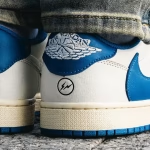In recent years, the sports apparel industry has seen a significant transformation, with technology and fashion converging to meet the evolving needs of consumers. One notable trend is the integration of wearable technology into everyday clothing. Brands are embedding sensors in apparel to monitor vital signs such as heart rate, body temperature, and movement, providing users with real-time health data and enhancing athletic performance. This fusion of fashion and function caters to the growing demand for health-conscious and tech-savvy products.
Another prominent development is the emergence of athleisure, where athletic wear doubles as casual, everyday attire. This trend reflects a shift in consumer lifestyle, valuing comfort without compromising on style. Items like yoga pants, sports bras, and sneakers are now commonly worn in various settings, from the gym to social gatherings, exemplifying the versatility of modern sportswear. The adaptability of these garments aligns with the fast-paced, multifaceted lives of consumers today.
Furthermore, sustainability has become a key focus in the design and production of sports apparel. Brands are increasingly adopting eco-friendly materials such as organic cotton, bamboo fibers, and recycled polyester to appeal to environmentally conscious consumers. This commitment to sustainability not only addresses environmental concerns but also influences purchasing decisions, as consumers are more inclined to support brands that align with their values. The integration of sustainable practices reflects a broader industry trend towards ethical responsibility and innovation.
These developments underscore a dynamic shift in the sports apparel market, where technology, fashion, and sustainability intersect to create products that resonate with modern consumers. As the industry continues to evolve, the fusion of these elements is likely to drive future trends and innovations, shaping the way we perceive and utilize sportswear in our daily lives.








